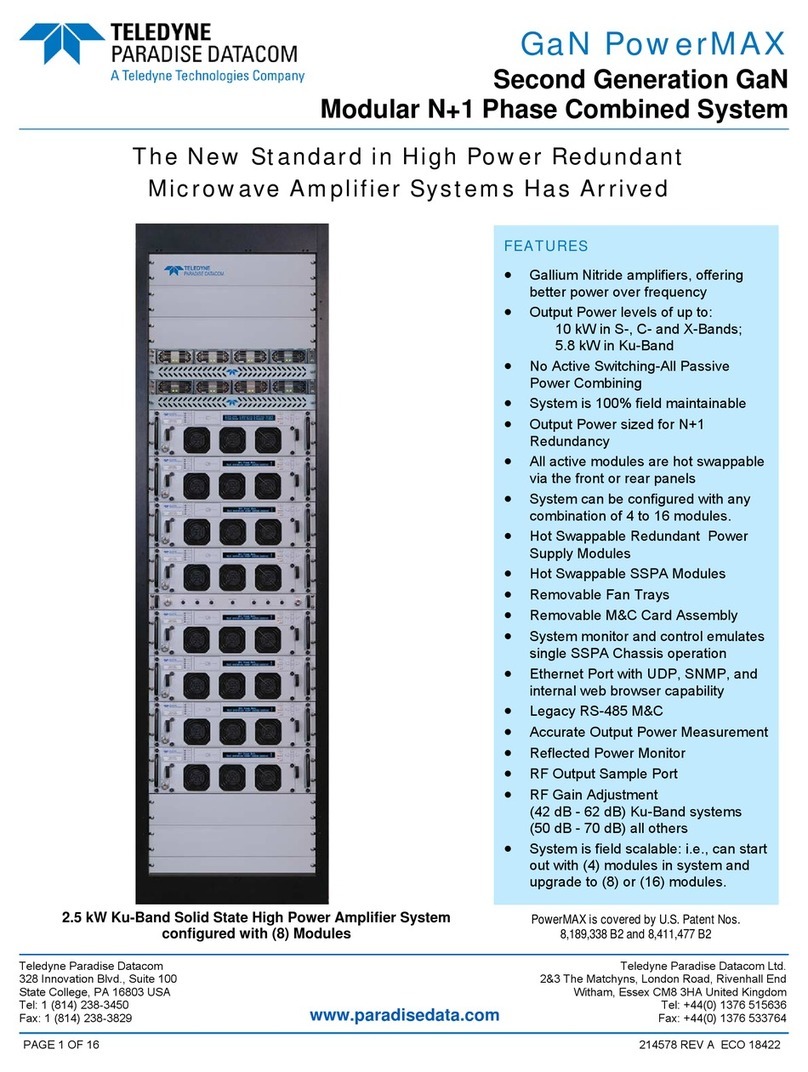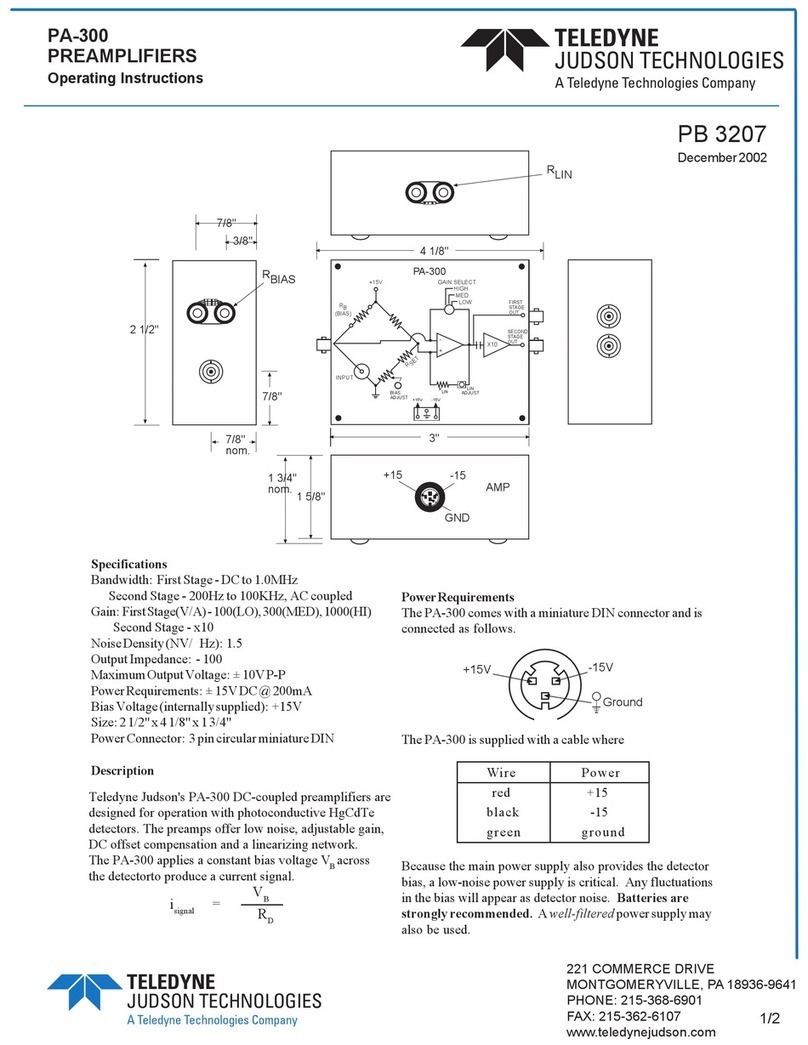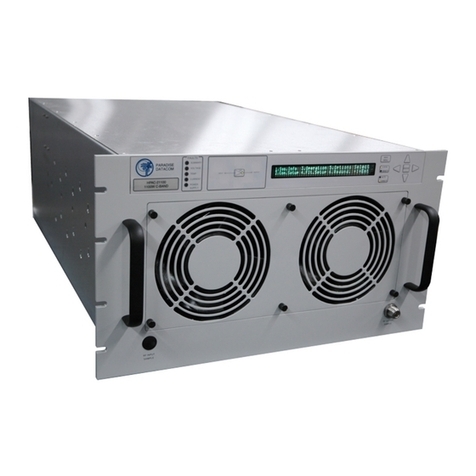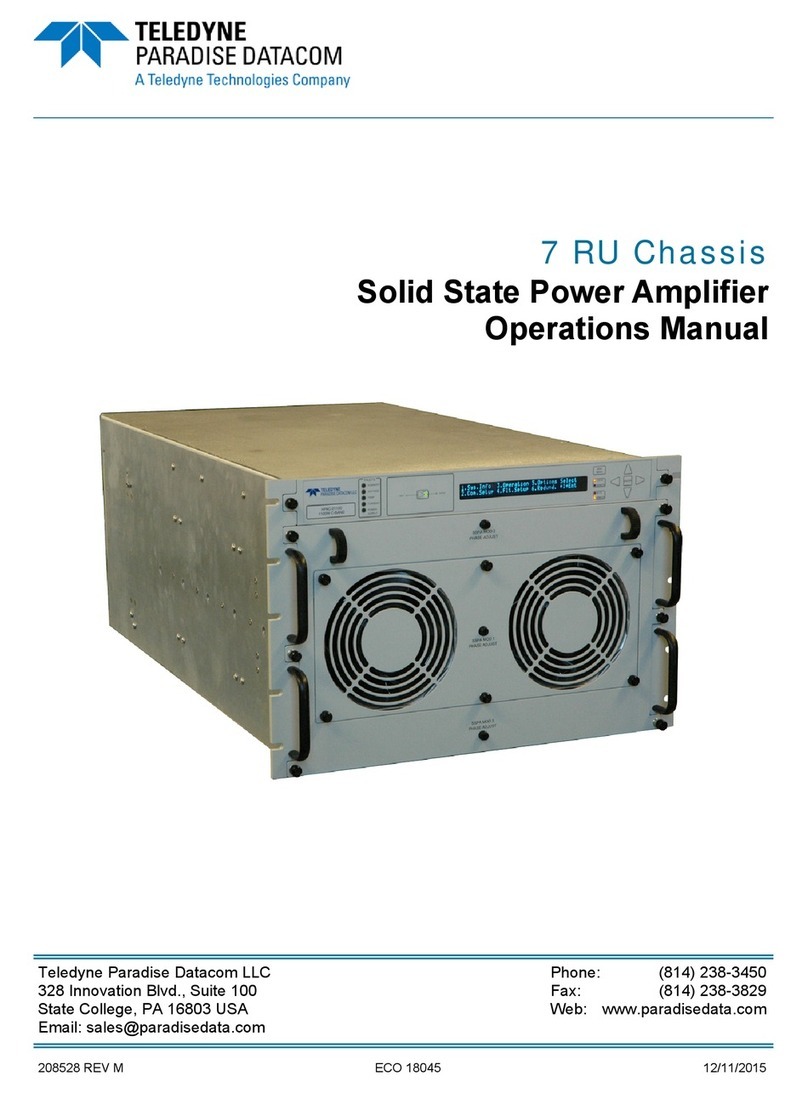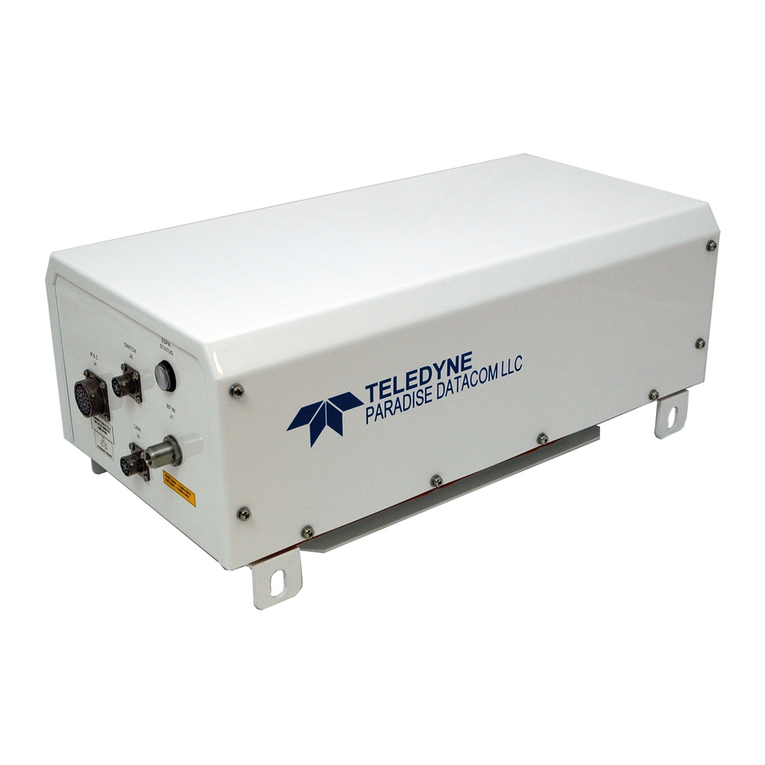PowerMAX SSPA System Operations Manual 214579 REV C 9
Figure 4-5: Unplug Connector .................................................................................................... 71
Figure 4-6: Example of Dust Blocking Heatsink Fins .................................................................. 72
Figure 4-7: Heatsink Fins Cleared of Debris ............................................................................... 73
Figure 4-8: Unplug M&C Cables ................................................................................................ 74
Figure 4-9: Unplug RF In Cable .................................................................................................. 74
Figure 4-10: Toggle Release Levers to Remove Module from Rack Slides ............................... 74
Figure 4-11: Install New SSPA Module ....................................................................................... 75
Figure 4-12: Reinstall Front Panel............................................................................................... 75
Figure 4-13: Slide Power Supply Module from the Chassis........................................................ 76
Figure 4-14: Loosen Retaining Thumbscrews ............................................................................ 78
Figure 4-15: Slide M&C Card Out to Remove ............................................................................. 78
Figure 4-16: Web Upgrade Authentication Window .................................................................... 80
Figure 4-17: Firmware Upload Form ........................................................................................... 80
Figure 4-18: Proceed With Upgrade Prompt ............................................................................... 81
Figure 4-19: Upload Process Message ....................................................................................... 81
Figure 4-20: Upload Completed Message .................................................................................. 81
Figure 4-21: Windows Device Manager > Ports.......................................................................... 82
Figure 4-22: Command Window Showing Program Prompts ..................................................... 82
Figure 4-23: Front Panel Display of System RF Power .............................................................. 83
Figure 4-24: Phase Adjusters for SSPA 2, SSPA 3 and SSPA 4 ............................................... 83
Figure 4-25: Adjust 8-Way Phase Trimmer................................................................................. 84
Figure 4-26: Adjusting Phase of SSPA 6, SSPA 7 and SSPA 8 ................................................. 85
Figure 4-27: Adjust 8-Way Phase Trimmer................................................................................. 86
Figure 5-1: Front Panel Display, Master Unit (Online LED Illuminated)...................................... 89
Figure 5-2: Front Panel Display, Slave Unit (Online LED Dark).................................................. 89
Figure 5-3: Front Panel Menu Structure...................................................................................... 93
Figure 5-4: System Information Menu Structure ......................................................................... 94
Figure 5-5: Slave Unit Display ................................................................................................... 103
Figure 5-6: Communication Setup Sub-Menu ........................................................................... 104
Figure 5-7: Operation Setup Sub-Menu .................................................................................... 111
Figure 5-8: Fault Setup Sub-Menu ............................................................................................ 113
Figure 5-9: Options Sub-Menu .................................................................................................. 117
Figure 5-10: Redundancy Sub-Menu ........................................................................................ 121
Figure 5-11: N+1 Info Menu ...................................................................................................... 123
Figure 6-1: SSPA Remote Control Interface Stack ................................................................... 125
Figure 6-2: Parallel I/O Form C Relay ...................................................................................... 127
Figure 6-3: Basic Communication Packet ................................................................................. 128
Figure 6-4: Header Sub-Packet................................................................................................. 128
Figure 6-5: Data Sub-Packet..................................................................................................... 129
Figure 6-6: Trailer Sub-Packet .................................................................................................. 132
Figure 6-7: Packet Wrapper Technique .................................................................................... 139
Figure 6-8: Terminal Mode Session Example ........................................................................... 143
Figure 6-10: UDP Redirect Frame Example.............................................................................. 145
Figure 6-10: Web Interface Login Window ................................................................................ 147
Figure 6-11: RM SSPA Web Interface, Status Tab ................................................................... 148
Figure 6-12: GetIF Application Parameters Tab ....................................................................... 159
Figure 6-13: GetIF MBrowser Window, with Update Data in Output Data Box......................... 159
Figure 6-14: Getif MBrowser Window, Setting settingValue.5 to a Value of ‘1’ ........................ 160
Figure 7-1: Select Rackmount SSPA ........................................................................................ 166
Figure 7-2: Add Rackmount SSPA Dialog Window................................................................... 166
Figure 7-3: Select ‘N+1 System’................................................................................................ 168
Figure 7-4: Add N+1 System Dialog Window............................................................................ 168
Figure 7-5: Status Screen ......................................................................................................... 169
Figure 7-6: Settings Screen....................................................................................................... 170
Figure 7-7: Faults Screen .......................................................................................................... 171
Figure 7-8: IP Setup Screen ...................................................................................................... 172
Figure 7-9: N+1 Screen (Master)............................................................................................... 173
Figure 7-10: N+1 Screen (Slave)............................................................................................... 173

